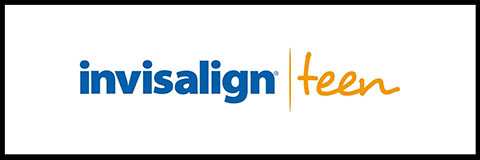Participating in sports is a fantastic way to stay fit, build teamwork skills, and enjoy the excitement of competition. However, for those undergoing orthodontic treatment, particularly with braces, engaging in athletic activities can present unique challenges and risks to dental health. Protecting your teeth and braces during sports is crucial for maintaining the progress of your orthodontic treatment.
With the ongoing 2024 Olympics, athletes from around the world are showcasing their skills on the global stage. Whether you’re inspired by these elite competitors or simply enjoy sports recreationally, it’s important to take steps to safeguard your orthodontic appliances. In this blog post, we’ll explore essential tips and strategies to protect your teeth and braces while you stay active on the field, court, or track. By following these guidelines, you can maintain your dental health and ensure your orthodontic treatment stays on track, allowing you to enjoy the best of both worlds: sports and a beautiful smile.
Wear a Mouthguard
Image by wavebreakmedia_micro on Freepik
A mouthguard protects your teeth and braces during sports by acting as a cushion that absorbs and distributes the impact of blows to the face, preventing dental injuries such as chips, fractures, and tooth displacement. It covers the braces, creating a smooth barrier that shields the brackets and wires from damage and protects the soft tissues inside your mouth from cuts and abrasions.
Additionally, a mouthguard helps stabilise your teeth, ensuring that the controlled movement facilitated by orthodontic treatment is not disrupted during physical activities. By reducing the risk of jaw injuries and providing a secure fit, a mouthguard allows for safer participation in contact sports, safeguarding your dental health and orthodontic treatment.
There are different types of mouthguards to consider:
- Custom-Fitted Mouthguards: Made by your orthodontist, these accommodate braces and other orthodontic appliances, providing the best fit and protection.
- Orthodontic Mouthguards: These mouthguards are designed with extra space to fit over braces, providing adequate protection without compromising the fit.
- Boil-and-Bite Mouthguards: Available at sporting goods stores, these can be softened in hot water and moulded to fit your teeth. While not as effective as custom-fitted mouthguards, they offer decent protection.
Use Additional Protective Gear
Using additional protective gear is essential for safeguarding braces during sports. Helmets and face shields are particularly effective in high-impact sports such as football, hockey, and rugby. Helmets protect the head from direct hits, while face shields or cages extend this protection to the mouth and jaw, reducing the risk of impacts that could damage braces and teeth.
Chin straps, when properly secured, help keep the helmet in place, providing consistent protection. This extra layer of defence prevents direct trauma to the braces. It also minimises the chances of brackets breaking or wires dislodging, ensuring that the orthodontic treatment remains on track and the teeth are well-protected during physical activities.
Avoid Certain Foods and Drinks
Hard, sticky, or chewy foods can damage braces by causing brackets to break or wires to bend, leading to potential setbacks in orthodontic treatment. Before and during sports activities, it’s essential to follow the diet rules as instructed. Be sure to steer clear of snacks like nuts, hard candies, chewing gum, and tough foods like beef jerky.
Besides that, sugary drinks, such as sodas and sports drinks, can increase the risk of cavities and weaken the adhesive that holds the brackets in place.
Athletes can maintain their braces’ integrity and ensure their treatment progresses smoothly while participating in sports by opting for softer, non-sticky foods and staying hydrated with water.
Maintain Good Oral Hygiene
Maintaining good oral hygiene helps prevent the build-up of plaque and food particles that can lead to cavities, gum disease, and damage to orthodontic appliances. Regular brushing, ideally after every meal and snack, removes food debris from around the brackets and wires, reducing the risk of decay and inflammation. Special tools like floss threaders or interdental brushes help clean between teeth and under the wires where a regular toothbrush might not reach. Using an antibacterial mouthwash can further help reduce bacteria in the mouth.
Maintaining good oral hygiene ensures athletes keep their teeth and gums healthy, supporting the effectiveness of their orthodontic treatment and minimising the risk of sports-related damage to their braces.
Be Prepared for Emergencies
Keeping an orthodontic emergency kit on hand can be a lifesaver in managing unexpected issues like loose wires or broken brackets. This kit should include orthodontic wax to cover sharp edges, lip balm to soothe any irritation, a small mirror for inspecting damage, and over-the-counter pain relief for any discomfort. Having these supplies readily available allows for quick, temporary fixes that can prevent further damage until professional help.
In addition, knowing how to address common orthodontic problems and having contact information for your orthodontist ensures that you can promptly address any issues, keeping your treatment on track and your braces intact while you enjoy your sports activities.
Regular Check-Ups
Regular check-ups allow your orthodontist to monitor the progress of your treatment and make necessary adjustments to ensure everything remains intact and effective. During these visits, the orthodontist can check for any damage or wear caused by sports activities, such as loose brackets, bent wires, or any other issues that may compromise the treatment. They can also provide professional cleaning and advice on oral hygiene and recommend specific protective gear tailored to your needs.
Regular check-ups ensure that any potential problems are caught early and addressed promptly, minimising disruptions to your treatment and ensuring that your braces remain in optimal condition while you stay active in sports.
Communicate with Coaches and Trainers
Communicating with coaches and trainers is crucial for protecting braces during sports, as it ensures they are aware of your orthodontic treatment and can take necessary precautions to safeguard your dental health. Informing them about your braces allows them to integrate safety measures into training sessions and games, such as reminding you to wear your mouthguard and other protective gear. Coaches and trainers can also adapt drills and activities to reduce the risk of facial injuries and provide immediate assistance if an orthodontic emergency occurs.
By maintaining open communication, you ensure that your sports environment supports your orthodontic treatment, reducing the likelihood of damage to your braces and promoting a safer, more enjoyable athletic experience.
Learn Proper Techniques
Learning proper techniques helps decrease the risk of injury and ensures the integrity of your orthodontic appliances. Proper techniques include using and caring for your mouthguard correctly and inserting and removing it carefully to avoid damaging your braces.
Moreover, understanding the correct form and movements in your sport can help reduce the likelihood of impacts on the face and mouth. For instance, keeping your head up and using your body to shield your face can protect your braces during contact sports.
By mastering these techniques, you can actively reduce the risk of dental injuries, maintain the effectiveness of your orthodontic treatment, and enjoy a safer sporting experience.
Use Orthodontic Wax
Using orthodontic wax helps to provide a smooth barrier that prevents irritation and injuries caused by the metal components of braces. When participating in physical activities, the brackets and wires can rub against the inside of the lips, cheeks, and gums, leading to painful ulcers and cuts. Applying orthodontic wax to any protruding or sharp areas of your braces creates a cushioning layer, reducing friction and discomfort.
Putting on orthodontic wax is especially important during sports, where increased movement and impact can exacerbate these issues. By using orthodontic wax, you can prevent minor injuries, maintain comfort, and ensure that your braces do not interfere with your performance or enjoyment of the sport.
Stay Hydrated
Hydration is vital for maintaining overall oral health and prevents damage to orthodontic appliances. Drinking water washes away food particles and reduces the build-up of plaque and bacteria that can lead to cavities and gum disease, both of which can complicate orthodontic treatment. Proper hydration also helps keep the mouth moist, reducing the risk of dry mouth, which can cause irritation and discomfort around braces and wires.
Water is also a better choice than sugary sports drinks, which can increase the risk of tooth decay and weaken the adhesive that holds brackets in place.
By staying hydrated with water, athletes can support their oral health and ensure their braces remain intact and effective during physical activities.
Enjoying your Sports
Staying active and participating in sports while undergoing orthodontic treatment requires extra care and attention to protect your teeth and braces. You can enjoy your favourite sports without compromising your dental health or orthodontic progress by using protective gear such as custom-fitted mouthguards, helmets, and face shields, avoiding certain foods, and maintaining good oral hygiene.
Following the tips outlined in this blog post, you can ensure your smile remains protected, allowing you to perform at your best in any sport. Remember, a proactive approach to dental protection will safeguard your orthodontic treatment and contribute to a lifetime of healthy, beautiful smiles.






Join the discussion One Comment